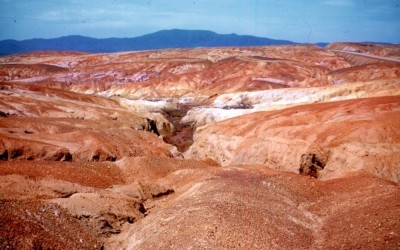Ducktown, Tennessee was originally populated by the Cherokee in the early 18th century. The name “Ducktown” translated from “Kawana”, which was a Cherokee village located on the Ocoee River. In 1836, the US gained control of southeastern Tennessee. A majority of the Cherokee were driven out of the area, while few sought refuge in the surrounding mountains for a short period of time.
In 1843, settlers discovered bits of copper in the ground. Due to the mountainous terrain, it took almost 30 years for folks to set up a full-fledged mining industry in the area.
It’s important to know that copper doesn’t come straight from the ground. Like other gems and minerals that are mined (diamonds, coal), copper needs to be extracted from the surrounding rock. A process called smelting was used in order to separate the copper from the surrounding rock, using heat as the catalyst. The Ducktown area did not produce coal, so locals chopped down every tree in a 50 mi radius of the mines.
What miners weren’t aware of were the environmental side effects copper mining would have on the basin area, not only to humans, but the vegetation and water sources as well. The smelting process released sulfur dioxide into the air, which combined with precipitation to create “acid rain”, and was toxic to the vegetation. Within a few short years, the landscape looked like a barren red desert, as shown in the photo below. This desert area was so large, it could be seen from space!
Eventually, mining companies discovered this hazard and began finding ways to capture the toxic gas. Mass copper mining ended in 1987, at which point locals began drawing attention to the devastation left behind. Several initiatives were put in place to regenerate the forests, one of which was to begin replacing the forest. But which trees should they use? After researching the benefits of different tree species, they landed on the mighty Pines, which are one of the quickest to mature.
Today, there are many different varieties of pine trees in the copper basin. At Wildwater’s Ocoee River Basin Canopy Tour, there are three major species you’ll encounter: the White, Virginia, and Loblolly Pine. Ask your canopy guide to point out the unique differences between these trees as you zip among them.


